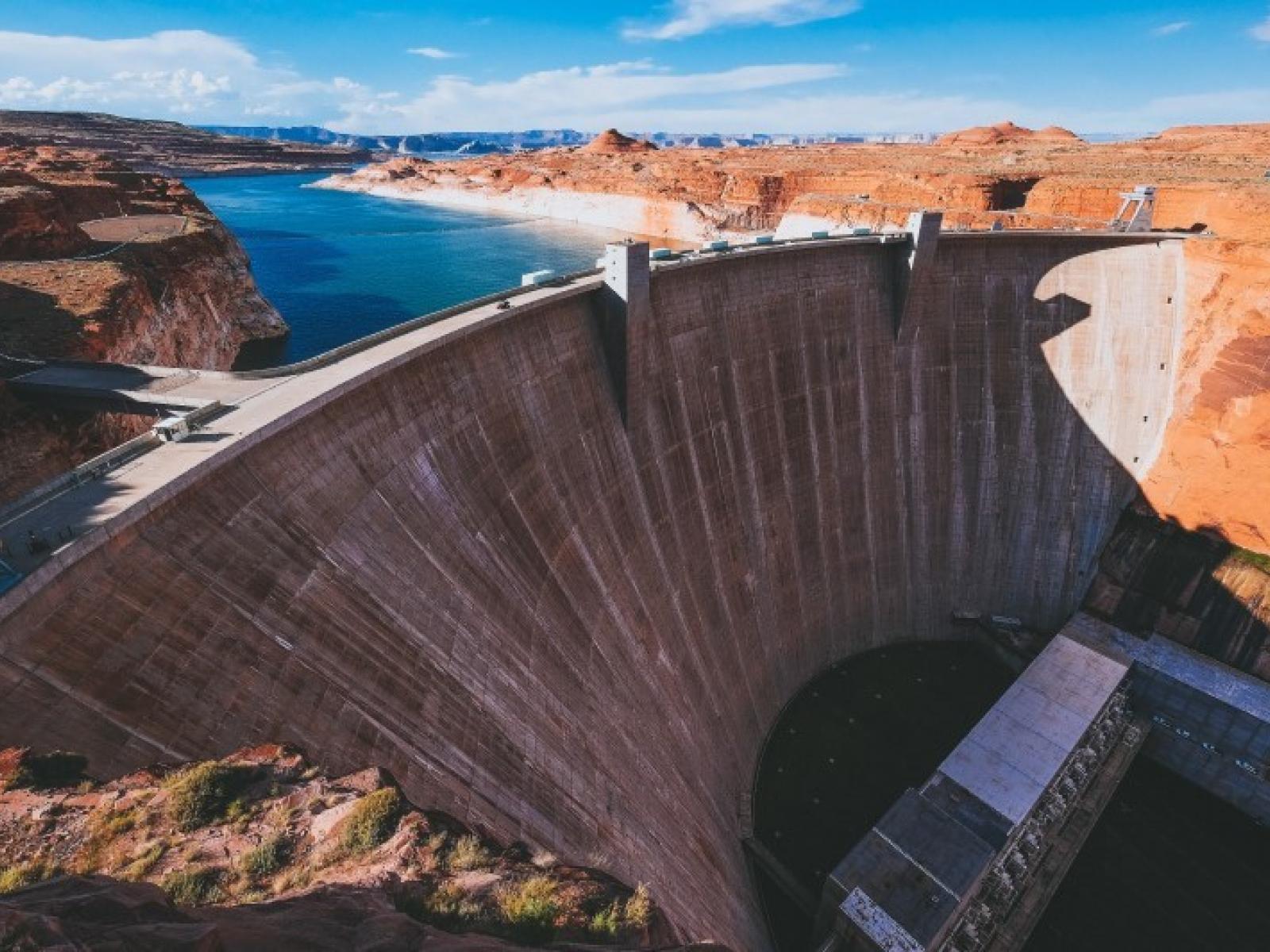Improving Projections of Future Hydropower Changes in the Western United States
Integrated modeling system with a new, process-based hydropower module accounts for both electric grid operations and environmental constraints

One-quarter of the total electricity produced in the western United States comes from hydropower, including electricity generated by Glen Canyon Dam in northern Arizona. Further exploration of coupled energy and water system dynamics using a two-step multiscale calibration enables researchers to produce more accurate projections of future hydropower changes in the western United States, which will be of value to regional power system planners.
The Science
Hydropower currently accounts for more than one-quarter of the electricity produced in the western United States, so there is considerable interest in understanding how this resource may evolve under changing environmental conditions. Previous estimates of future hydropower generation have generally been based either on statistical relationships deduced from historical hydropower production or on simplified process-based models. In this study, researchers at the U.S. Department of Energy’s Pacific Northwest National Laboratory enhanced a large-scale river-routing and water management model with a process-based hydropower module that accounts for reservoir operation constraints, grid operation constraints, and hydrometeorological simulation biases. The results of the study are generally consistent with previous assessments of how hydropower generation may change in the future, but with slightly weaker seasonal shifts and reduced uncertainties.
The Impact
By adding operational constraints on hydropower generation and using a two-step multiscale calibration, the approach used in this study produces more accurate projections of future hydropower changes in the western United States, which will be of value to regional power system planners. The design of the model, with explicit attention to operational constraints, also provides a platform for further exploration of coupled energy and water system dynamics.
Summary
In this study, the authors enhanced an integrated hydrological model (MOSART-WM) with an enhanced process-based hydropower module to predict future hydropower generation. The new module addresses several commonly underrepresented constraints, including (1) ecological spills, (2) penstock constraints to provide flexibility in electricity operations, and (3) biases in hydrometeorological simulations. By evaluating projections based on two radiative forcing scenarios (RCP4.5 and RCP8.5) and ten downscaled global Earth system models, the authors found that (1) potential hydropower generation is not projected to change substantially on an annual time scale in most of the study region; (2) at the seasonal time scale, systematic shifting of generation patterns can be observed in snowmelt-dominated regions; and (3) including more complex operations and constraints tends to reduce uncertainties, especially at the seasonal time scale. In the Pacific Northwest, where hydropower is the dominant electricity source, the predicted future shift in hydropower generation toward the spring season is about 10% lower than in regression-based projections. These results demonstrate the value of using a multisector, multiscale modeling approach to investigate complex system dynamics under time-evolving boundary conditions.
PI Contact
Nathalie Voisin, Pacific Northwest National Laboratory, nathalie.voisin@pnnl.gov
Ian Kraucunas,Pacific Northwest National Laboratory, ian.kraucunas@pnnl.gov
Funding
The integrated hydrologic simulations were conducted under the Laboratory Directed Research and Development Program at Pacific Northwest National Laboratory. The regional analysis and writing of the paper were supported by the U.S. Department of Energy, Office of Science, as part of the Multisector Dynamics, Earth and Environmental Modeling Program.
Revised: October 22, 2019 | Published: March 22, 2019
T. Zhou, N. Voisin, and T. Fu, “Non-stationary hydropower generation projections constrained by environmental and electricity grid operations over the western United States.” Environmental Research Letters 13(7):074035 (2018). https://doi.org/10.1088/1748-9326/aad19f